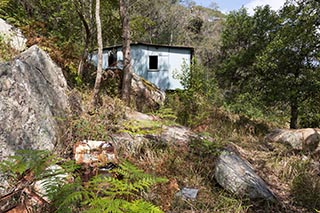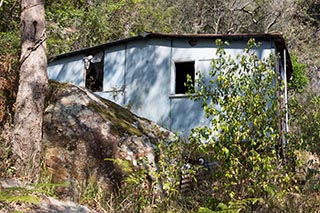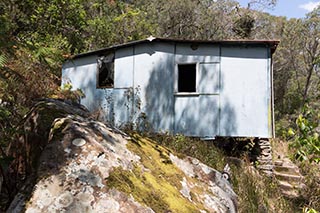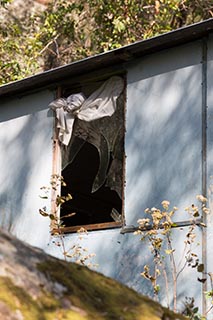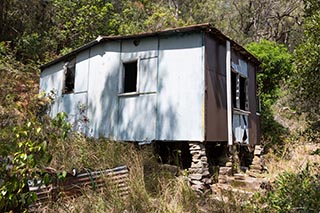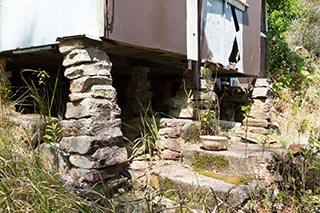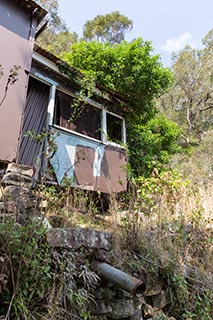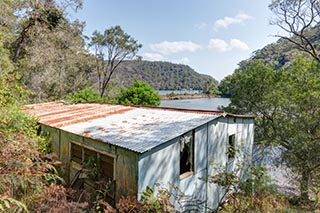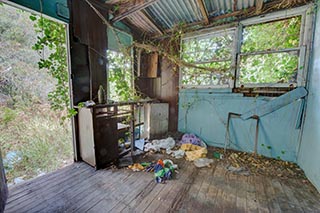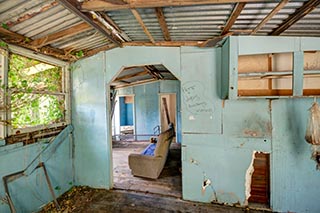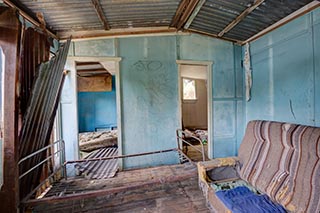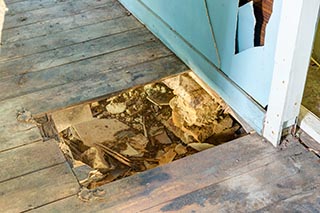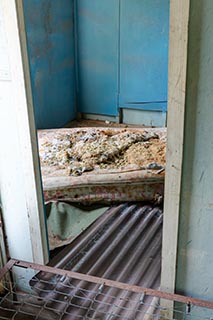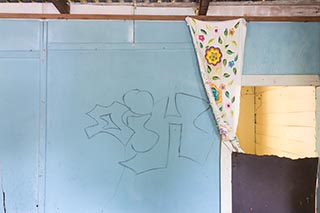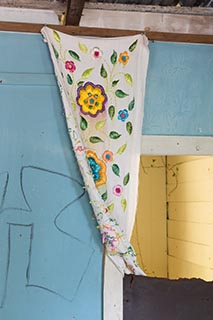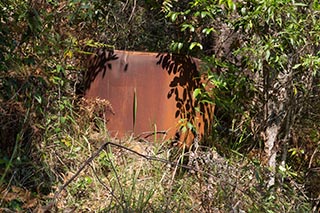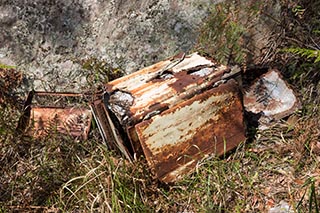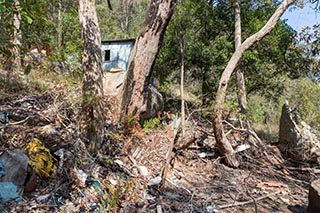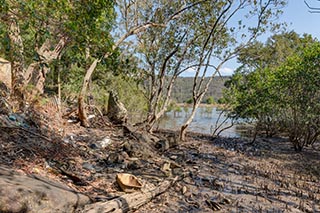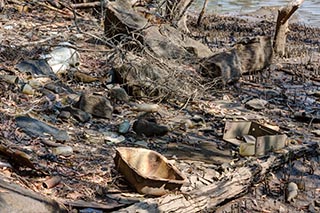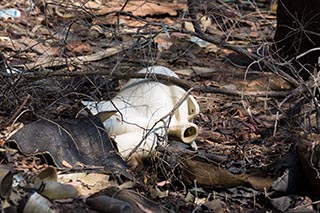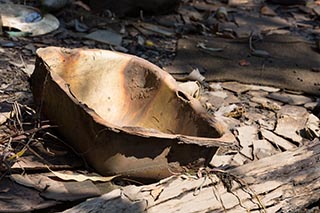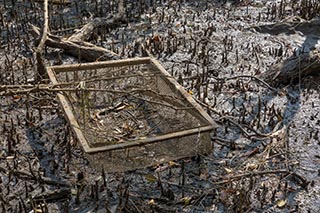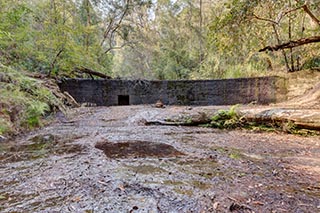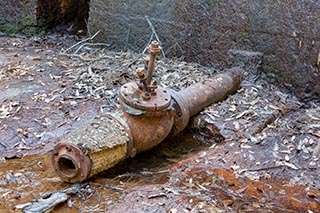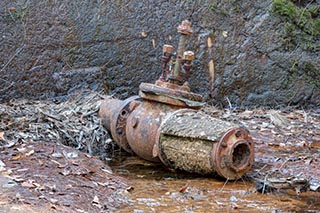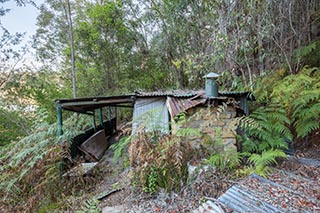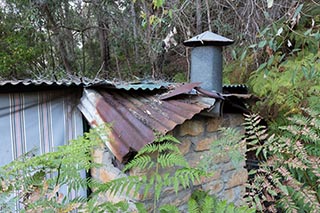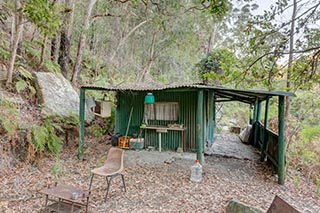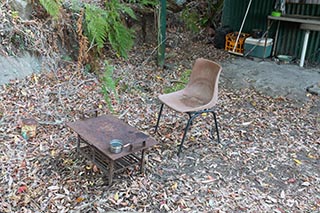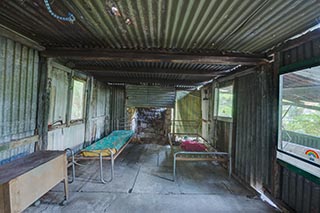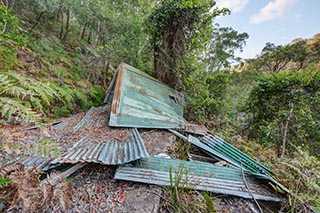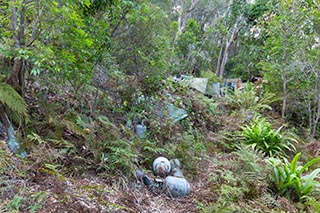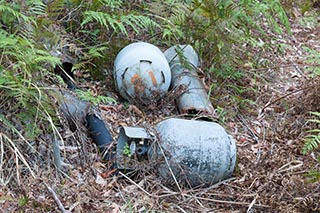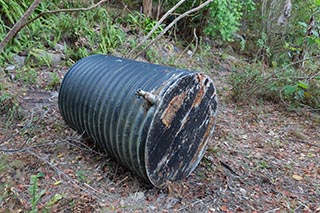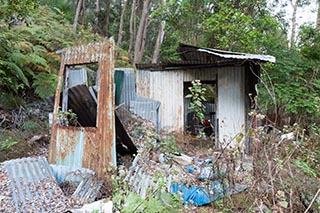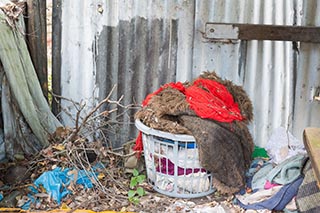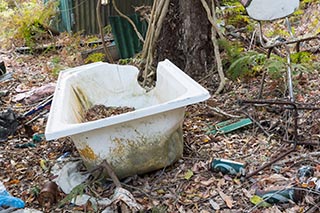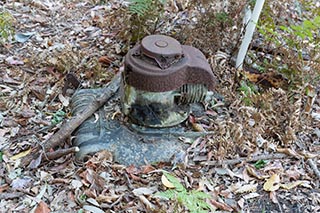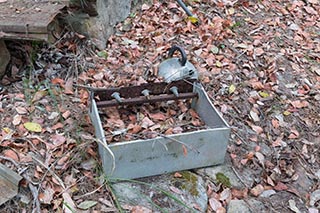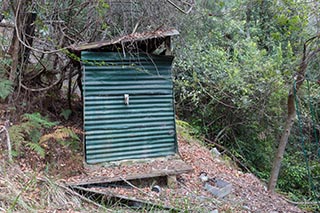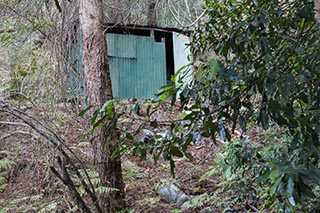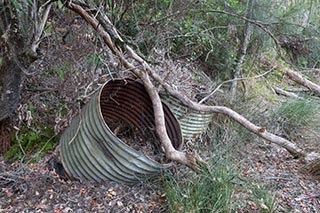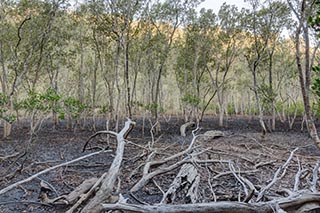For many years, several shacks stood in the bush by an inlet in the shore of Mullet Creek, an arm of the Hawkesbury River, not far from Wondabyne Railway Station. The Central Coast and Newcastle Railway line runs atop a causeway across the mouth of the inlet, so the shacks were a familiar sight when I rode the train to Sydney. From their derelict appearance in recent years I realized that they were probably abandoned, and thought that they might be worth a closer look.
One day in late 2012 I decided to go and check them out. I walked alongside the railway line from Wondabyne Station, then followed a short bush track to the first shack. The track was obviously still in regular use, so apparently some people still visited the place fairly often.
The shack was a small, simple house mounted on roughly made pillars of local sandstone. The walls consisted of fibro sheets on a wooden frame, and the roof was made of corrugated iron, an inexpensive style of construction that was once extremely common in Australia. The condition of the place left no doubt that it had been abandoned for some time. I have no idea who used to live there, or when it was last lived in.
The interior of the house was a dirty shambles, but a fairly clean embroidered cloth hung incongruously from one of the walls. I guessed that it had been left by recent visitors. Perhaps squatters still used the place occasionally.
The area around the house was littered with assorted garbage, ranging from a toilet to numerous cans and bottles.
While I was photographing the house, a young man approached me. He said that he was staying in one of the shacks on the opposite side of the inlet, and came to see what I was doing. I don't remember the details of our conversation, but at one point he told me about an old railway dam in the hills behind the inlet. He said that he'd been staying in the shack for a few days, and didn't have the money to catch the train back to Woy Woy. I thought this was a bit odd, since you can walk there in not more than a few hours, but nevertheless I gave him money for train fare. I figured that he'd done me a favour by telling me about the dam, so I didn't mind giving him a few dollars in return.
I decided to have a look at the dam, which would have once supplied water for steam locomotives. The remains of an old water pipe led the way, so it was easy to find, but I had to force my way uphill through dense vegetation, which was hard work with a load of photographic equipment. The dam itself was a bit of a disappointment. It was nearly full of mud and debris, and not very photogenic.
After visiting the dam I made my way to the opposite side of the inlet. I found a single reasonably intact shack, a simple corrugated iron structure, which was presumably where the man had been staying. It was in decent condition and surprisingly tidy, so the people who squatted there evidently made some effort to take care of it. There were a few camp beds inside, and a stone fireplace. It would have been a tolerable place to spend the night if nothing better were available, except for the fact that mosquitoes would have soon found their way inside through numerous gaps in the walls.
Several other shacks were in various stages of collapse, and a large amount of debris was scattered around. I even found what looked like a filthy basket of laundry in the remains of one of the shacks. I was surprised to see a ruined lawnmower, because I doubt that there was ever a lawn to mow anywhere nearby. It was a bizarre scene to find in the bush, miles from the nearest road. People could hardly have been using such a remote place as an illegal garbage dump.
It was already afternoon when I arrived, and the angle of the sun wasn't suitable for some of the photographs that I wanted to take. I planned to return some morning to finish my shoot, but unfortunately I never got the chance. Not long after my first visit, the authorities demolished the shacks and cleaned out the area. Today nothing remains but some traces of the foundations and a few bits of debris that they overlooked.
